The Deacon of Killingworth
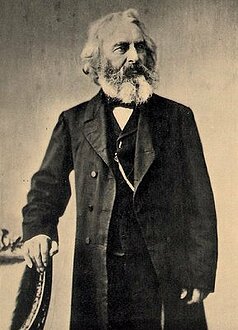 Last year I shared with you a family history connection we have with Henry Wadsworth Longfellow – great American poet and truly one of the “rock stars” of the 19th century.
Last year I shared with you a family history connection we have with Henry Wadsworth Longfellow – great American poet and truly one of the “rock stars” of the 19th century.
We share with Longfellow the common ancestors of John and Priscilla Alden.
Another common ancestor we share is “The Deacon”, as Longfellow referred to him in his famous poem, The Birds of Killingworth.
Cousin Henry Wadsworth Longfellow is famous for a lot of things.
He was very educated. He spoke ten languages and studied dozens more. He was not only a poet but also a famous educator, teaching for a time at Harvard.
His published works not only showcased his knowledge of history and literature but they reflected well his sensitive nature about things as personal as love and family.
As an artist, both then and now, he has had to endure the barbs of critics who felt his works were frequently too romanticized and filled with fantasy.
I’m no critic. I’m also no expert on the high-minded world of poetry. I cannot write it, much less understand it well when I read it.
But in studying the life of Longfellow I do know this: he knew his family history, whether talking about John Alden or The Deacon.
The Birds of Killingworth is a poem set in the very real village of Killingworth, Connecticut – a very important place in early American Westover family history.
It was, for a time, home to Jonah Westover, the first Westover in the New World.
In the poem the story is told of a town meeting held in Killingworth where the farmers implore town leaders to do something about the birds that were feasting on the farmers’ crops.
Even as the songs of those same birds wafted through the windows of the old church where the meeting was held the argument was made to kill the birds.
The town elders were riled up. The Squire, the Parson, and the Deacon were there, which gave weight to the proceedings.
Of the Deacon, Longfellow described him like this:
And next the Deacon issued from his door,
In his voluminous neck-cloth, white as snow;
A suit of sable bombazine he wore;
His form was ponderous, and his step was slow;
There never was so wise a man before;
He seemed the incarnate “Well, I told you so!”
And to perpetuate his great renown
There was a street named after him in town.
Arguments were made in the debate from every side but for the birds, well, “Hardly a friend in all that crowd they found”.
The town voted to kill the birds and as the poet tells the story they came to regret it. Without the birds the worms took over the crops and the insects devoured most of the grain and the leaves on the trees, leaving the fruit to be scorched by the sun.
The farmers and the town indeed learned the lesson of that balance to nature that the birds provided.
Many interpretations of this famous poem do not recognize Killingworth as a real place.
But Longfellow did.
Killingworth was a stopping point for Longfellow in his travels when he wrote The Birds of Killingworth in 1863. Why was Henry Wadsworth Longfellow in Killingworth, Connecticut?
Because he knew it as an ancestral homeland.
If Longfellow knew anything, it was his family history.
His father was a lawyer and his maternal grandfather was a general in the American revolution as well as a member of Congress. Longfellow knew he was descended of at least four Mayflower Pilgrims.
When he was 15 he attended Bowdoin College in Brunswick, Maine – a college founded by his grandfather and his father was a trustee of the institution.
Longfellow was taught his family history and used his knowledge of his ancestors in many of his most famous works. They inspired him – even the Deacon.
The Deacon was Edward Griswold, town father of Killingworth, Connecticut and father to Hannah Griswold Westover, wife of Jonah Westover, the first male Westover in America.
Griswold was born in 1607 in Kenilworth, England, from which the name Killingworth is derived. He was born in a family rich in English history and famous for providing greyhounds for the King. He was educated and his family was connected.
Edward Griswold married in 1629 and with his wife Margaret had about five children before immigrating to the New World in 1639.
Edward brought with him younger brothers Michael, Francis and Matthew, all who would make historic contributions to the history of Connecticut and Massachusetts.
Edward quickly became prominent in the affairs of Windsor, Connecticut. He served as Deputy to the General Court from Windsor and was also Justice of the Peace of Windsor prior to 1663.
He was granted land from the King in Poquonoc (now Groton), about 4 miles west of Windsor, in 1642, but he didn’t move there until after the Indians were gone from the area. When it was safe, they settled the area with the families of John Bartlett and Thomas Holcomb in 1649.
His brothers Francis and George came to settle there soon after. His homestead consisted of 29.5 acres, bounded at the east by the Poquonoc River, the south and west-northwest by Stony Brook.
The house stood on the hill just to the north of the main road. Because of the potential dangers of the wilderness, the families were relieved of military duty so long as there was always a man available to stand as sentinel.
In 1663 Griswold was appointed to a committee charged with developing a new area near a place called Saybrook.
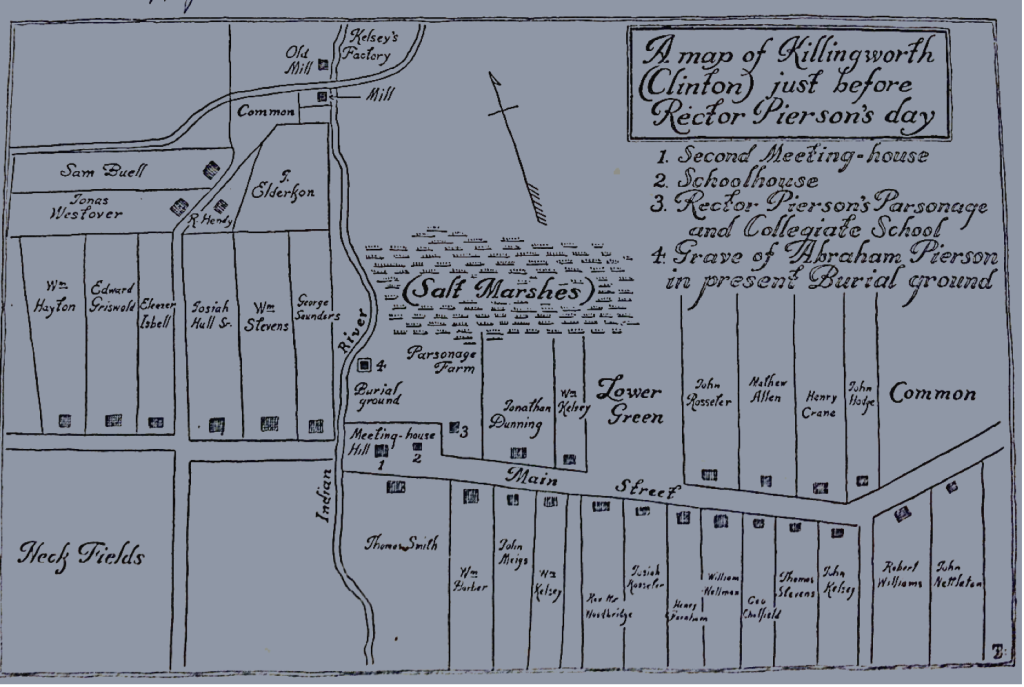 It took some time but within a few years Griswold had moved his family there, including new son-in-law Jonah Westover and his family. He helped to charter the foundation of a Church there and was named Deacon. In 1667 he was named deputy of Killingworth, a position he held nearly up to the time of his death.
It took some time but within a few years Griswold had moved his family there, including new son-in-law Jonah Westover and his family. He helped to charter the foundation of a Church there and was named Deacon. In 1667 he was named deputy of Killingworth, a position he held nearly up to the time of his death.
Over the course of his years there Griswold was influential in nearly every major civic action, collecting properties and settling claims with other area pioneers.
Edward and Margaret had at least a dozen children. As such, Edward sits as head of a very large family tree, with some 20 million plus people in his downline. As a prominent individual with fairly well documented history there literally thousands who have been working on his history.
I also believe, given his ties to the Puritan movement, that Edward Griswold had a very large influence upon the children of others.
I cannot prove it but I strongly suspect his ties to Jonah Westover pre-date the marriage of his daughter Hannah to Jonah. The year of their immigration and the year of Jonah’s ascension as a married man, a Freeman, and a property owner coincide very closely with the movements of Edward Griswold.
I believe Edward Griswold was as much a step-father and mentor to Jonah Westover as father-in-law. Their lives were that closely aligned. In both Simsbury and in Killingworth the Westovers were also neighbors to the Griswolds.
I don’t think Longfellow was plagued much by imagination in his poetry. I believe he educated himself on history of both places and individuals.
In fact, The Birds of Killingworth stirred the suspicions of experts long after Longfellow’s death. What was his inspiration?, they wondered.
“The Birds of Killingworth” is the only episode in Tales of a Wayside Inn that Longfellow had not adapted from an older textual source.
For many years readers suggested that Longfellow might have likewise based this tale, describing the massacre of pestilent birds by the citizens of the town in Connecticut, on some forgotten legend or historical incident.
Shortly after Longfellow’s death a literary sleuth wondered whether the tale originated on the other side of the Atlantic, since Killingworth got its name from Kenilworth, in England. One person even went to great lengths to write the town clerk in Kenilworth, England to see if ever there was a town vote about killing birds. None was found.
Nobody in the 19th century seemed to make the connection of Longfellow to Killingworth, though they never stopped trying.
In 1890 a publication called American Notes and Queries published a letter from Longfellow’s brother Samuel, who claimed that he found a newspaper clipping reporting a debate in the Connecticut legislature upon a bill offering a bounty upon the heads of birds believed to be injurious to the state’s farmers. It was from this not-so-famous debate that it was concluded that Longfellow had to have used it as his inspiration for the famous poem.
We know now that had little to do with it. Killingworth was a personal connection for Longfellow. While the story of the birds has no known basis in historical fact the characters within the poem were strikingly real when compared to what is known about Killingworth history — and Longfellow history (and, by extention, our history).
On Longfellow’s 100th birthday in 1907 journalist William E. A. Axon reported in The Nation that, a year before Longfellow died, he had written to him, asking “whether this narrative had any basis of fact or was merely the fantasy of a poetic brain”— and the great poet himself had replied:
The poem is founded on fact. Killingworth is a farming town, on Long Island Sound…of course, the details of the poem are my own invention, but it has substantial foundation of fact.
That fact was family.

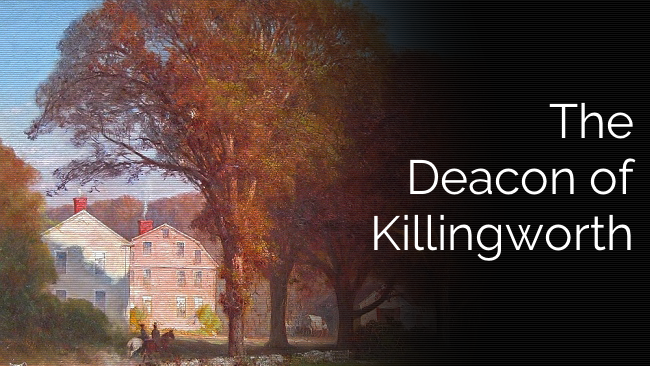
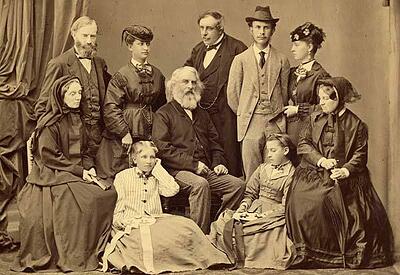
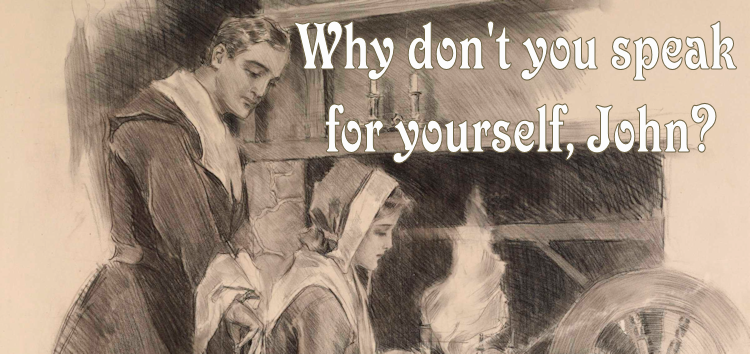
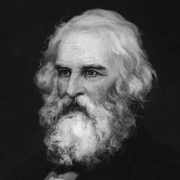

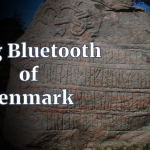
Leave a Reply
Want to join the discussion?Feel free to contribute!